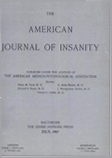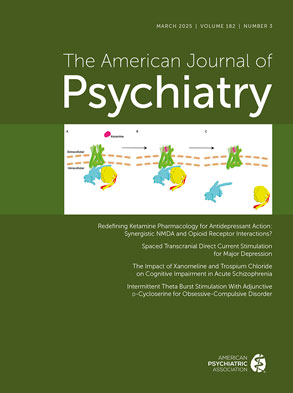Abstract
There are several theories concerning the etiology of Alzheimer's disease. This is probably due to the fact that the disorder is really a syndrome with numerous etiological factors, and may be subdivided into the presenile type (hereditary transmission not known), the intermediary type (with hereditary trends), and the juvenile type (hereditary transmission not known). Two cases have been reported in association with lesions of the choroid plexus. (Fuller, Malamud-Lowenberg.) This case, in which the etiological factors are quite obscure, offers little assistance in arriving at the cause of the disease. Since the disorder began at the age of 49 years, it is difficult to regard it as an early senility. Hereditary factors can also be excluded since the ancestry is characterized by longevity and preservation of mental faculties in advanced years, and three elder siblings show no mental symptoms. There was no evidence of disturbance of the hemato-cephalic barrier, bromide permeability being within normal limits.
The onset was slow and insidious, the early symptoms being confined to the intellectual field as manifested by inability to calculate. The early affective changes were not marked and only mild anxious, apprehensive reactions were noted.
The duration of the disease is frequently short (two-three years) and the progress marked by rapid physical and mental failure. In a few cases the duration was 10 to 20 years. (Barrett, Bett, Grünthal.) This case belongs to the latter group as shown by the considerable intellectual preservation after five years.
Neurological disturbances have been observed frequently and the findings in this case are in accord with those reported in the literature. However, there are only a few reported instances of positive Babinski and Chaddock signs.
Disorders of speech are common in Alzheimer's disease and were marked in this case. There was mild slurring in ordinary conversation but pronounced on test phrases. There was no definite evidence of aphasia and much of his difficulty appeared due to inability to coordinate the vocal apparatus rapidly. The loss of inflection, rhythm and emphasis in reading aloud was apparently in relation to the necessity of attacking each word separately. He focused his attention on the correct pronounciation and comprehension of the meaning and thus the grammatical relations of the words were overlooked.
The most interesting and important findings were in the intellectual fields and the accompanying functions of motor expression. The narrowing of the field of mental and motor coordination and the necessity of full concentration on a single function were well shown in tests of motor ability. In those tests in which all attention was focused on the actual motor function, the performance was excellent. When the attention was divided (as in tapping when a certain word was read, writing from text, written spelling) both mental and motor performance were poor. The motor coordination was poor unless all attention was centered upon it.
This case, because of its slow progress and the accessibility to examination, offers data on the type and progress of the mental disorganization. The first impairment was in the field of calculation and continued until there was marked difficulty in carrying through logical mathematical processes. The mathematical ability best retained (multiplication tables) was dependent on remote rote memory, while he was unable to solve problems requiring logical reasoning. Memory, also, was involved early in the disorder, but the main impairment was in the field of retentive memory while remote memory was fairly well retained. Various tests demonstrated that he attended, was able to perceive and comprehend, but there was severe disability in engram formation and recall. However, when the subject matter was deeply engraven (constant repetition of a story) it was retained and recalled after several days. The functions of perception and comprehension were fairly well retained as long as only simple everyday objects were used, but showed considerable impairment on unusual and abstract material. The slowness of mental reactions was well shown by many time tests as well as the prolonged association time. The correct result was achieved only after prolonged and laborious effort.
The extent to which some intellectual functions were retained is surprising in view of the advanced cerebral pathology suggested by encephalography and the histological picture. It has long been felt that there is a close parallel between the degree of mental deterioration and the severity of the pathological process. Recently Grünthal has clinically classified cases of Alzheimer's disease as mild, moderate and severe and compared the degree of mental impairment with the histological findings (number of plaques, Alzheimer fiber changes, lipoids, glia reaction, ganglion cell changes). In his series there was a very close correlation between the clinical and histopathological findings. This case would fall in a clinical transition group between Grünthal's mild and moderate types, yet the cerebral pathology, judging even from the very incomplete pathological study, would suggest a very severe involvement. It is apparent, therefore, that while there is great value in Grünthal's approach, this case does not fit into his classification and correlation.
This case is unique in that a positive diagnosis was made while the patient was still accessible to examination. An attempt was made to outline a pattern of mental deterioration in order to ascertain if there was a psychological picture pathognomonic of Alzheimer's disease which would serve to differentiate it from other organic reaction patterns. An evaluation of the findings in this case suggests that at present it is not possible to differentiate Alzheimer's disease from other diffuse diseases of the cortex solely on the psychological picture.

